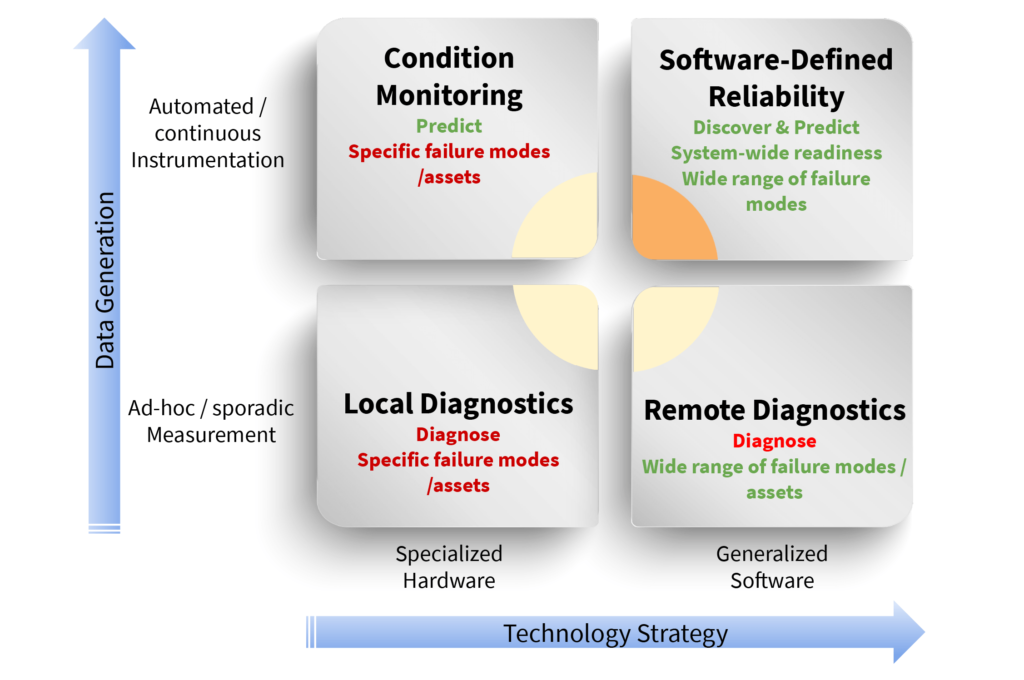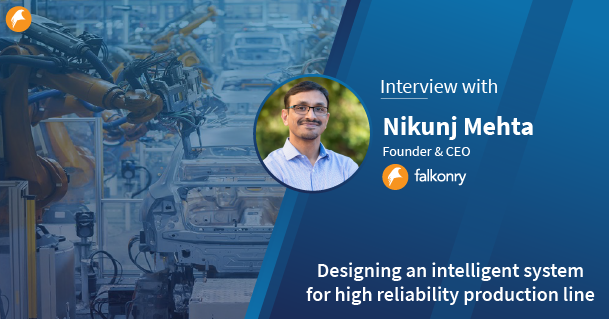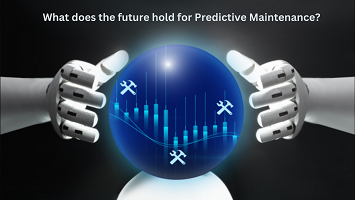Software-defined reliability
Key Takeaways:
- Industrial reliability management is difficult to scale beyond the most common asset types
- High reliability requires comprehensive asset type coverage and operational data mapping to reliability knowledge
- High reliability is only possible at scale with software-defined reliability
Space exploration and high reliability are synonymous. The reliability of probes and landers has come mainly because of massive design investment into reliability, including FMEA-driven component design, redundancy, remote monitoring and remote diagnostics. The same cannot be said about most other industrial segments, which struggle to universally make operational decisions based on quantitative data while being constrained by the technical limits of design and training. Nevertheless, as digitalization changes manufacturing practice, reliability is a key discipline that needs to be transformed along with it.
In some ways, manufacturing reliability and IT security are similar – they both are all pervasive and only as good as the weakest link. Companies have significantly beefed up IT security in the past decade. This has been done using software technology that overcomes human weaknesses, allowing secure practices at the enterprise scale. It is Falkonry’s hypothesis that the same mindset ought to be applied to manufacturing reliability. An enterprise software approach to reliability is very much needed for Industrial transformation.
In this article, we compare traditional technologies used for reliability analysis such as local diagnostics with recent approaches such as asset-specific condition monitoring and remote diagnostics. We also introduce state-of-the-art practice of high reliability called software-defined reliability. These methods are contrasted in a quad chart as shown in Figure 1 that take into account the regularity of data generation and the role of software.

Traditional post-design reliability practices involve specialized instrumentation – mostly portable but sometimes fixed – and accompanying software to analyze instrumentation data. This is the local diagnostics approach in which measurements such as with multimeters, vibration recorders, oscilloscopes, and imaging systems are used to diagnose specific failure modes on specific assets depending on the skills of available reliability engineers. Various levels of competencies exist for training and certifying reliability engineers to equip them to solve different kinds of problems. In this traditional mode of reliability management, there is separation between asset owners and reliability managers. That is, there is frequently a separate reliability team which uses the specialized equipment and methods from those who manage and operate the equipment to achieve plant business goals.
Industrial IoT has moved reliability into the Internet age. Measurement methods are networked and data can be moved over long distances. That allows a centralized team of reliability engineers to conduct remote diagnostics. It does not change the nature of analysis that is performed but a centralized team can combine their skills to address a wider range of reliability issues. This approach suffers from two shortcomings:
- System-wide reliability analysis is just as hard to perform because each analysis is still limited to the type of data being generated in each source, and
- Issues can only be predicted to the extent that the data collection occurs and because that is sporadically performed, reliability issues are missed just as often as earlier
In asset-specific Industrial IoT applications, electromechanical sensors attached to rotating machinery or electrical flows are networked to specialized service providers who aggregate similar data from various operating organizations. These organizations can leverage this collected data to perform condition monitoring across a certain class of machinery such as pumps and motors to provide diagnostics and prediction for failure modes of that asset type. A large number of asset types that are operated in a plant cannot be covered because of insufficient financial incentives, and the approach does not address system-wide issues resulting from interaction of multiple assets that would fall outside the experience of each service provider.
Software-defined reliability overcomes the shortcomings of asset-specific condition monitoring as well as remote diagnostics. It analyzes both continuous process and ad hoc specialized instrumentation measurements. From this operational data, it discovers novel behaviors as well as alertable adverse behaviors. These behaviors are informed to asset owners to provide them sufficient lead time to intervene and avoid a reliability event as well as provide diagnostics about these behaviors so that the asset owner can effectively perform the intervention effectively. It also looks at system-wide issues by analyzing behaviors across assets and process segments. These capabilities and more are incorporated into Falkonry time series AI.
Time series AI is capable of learning and getting better over time. It records human tribal knowledge and maps it against observed behavior in operational data and later recalls that knowledge in the form of root causes, recommended action, and required expertise so that planning can be effectively performed. Time series AI augments the asset owners’ abilities by continuously and automatically learning and analyzing material system behavior.
Software-defined reliability allows organizations to overcome the challenge of finding the specific reliability expert for each piece of equipment in every location and doesn’t require other people to perform specialized setup or analysis. It also helps to manage system-wide reliability gaps that are very hard to manage with a changing workforce. Because of these two reasons, asset owners have almost complete control over the application and benefits of software-defined reliability and it becomes scalable across an enterprise.





